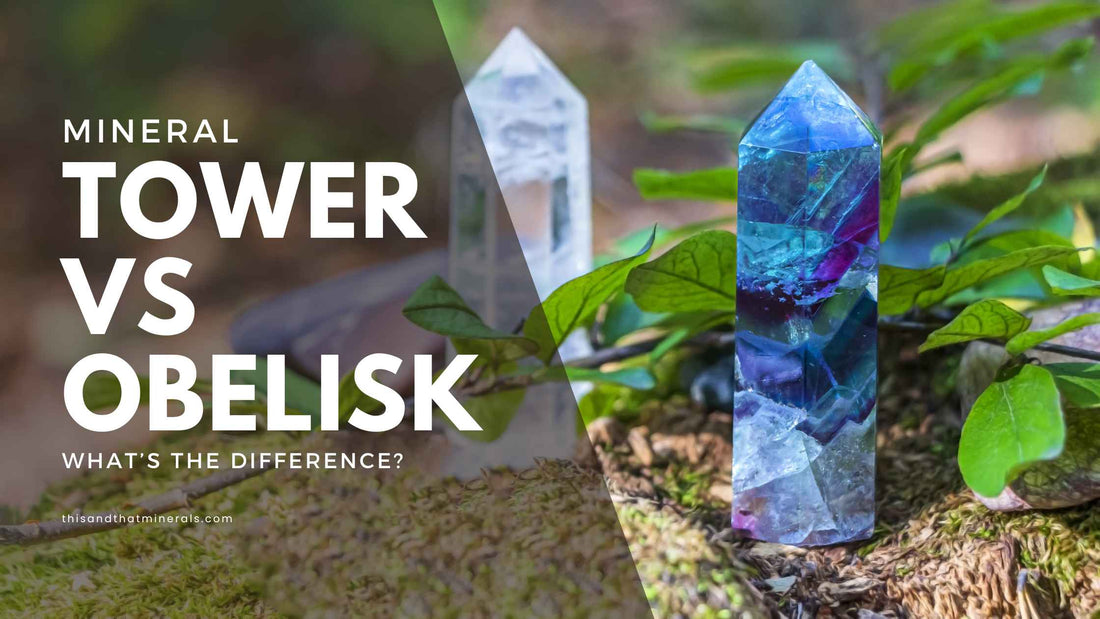
Mineral Tower versus Obelisk: What is the Difference?
Minerals come in various shapes and sizes in addition to their natural forms. These varieties include spheres, carvings, obelisks, and towers. While they may seem similar at first glance, key differences between these formations are worth exploring. In this article, we will look at mineral towers versus obelisks to answer the question, "What is the difference?"
Mineral Towers
The technical term for mineral tower is crystal tower. A crystal tower typically refers to a tall, often slender structure made from a single piece of crystal or a cluster of crystals, each with its own unique properties and energetic qualities. These towers are popular in crystal healing, metaphysical practices, and decorative arts.
Crystal towers can be carved from a single piece of crystal (such as quartz, amethyst, or selenite) or composed of multiple crystals arranged in a tower-like formation. They come in various shapes, including cylindrical, hexagonal, or tapered forms, depending on the natural shape of the crystal or how it’s been cut and polished.
Due to their pointed shape, crystal towers are believed to act as natural amplifiers, drawing in energy from their surroundings and channeling it through their apex. This makes them popular tools for meditation, energy work, and spiritual practices, as they are thought to enhance intention-setting and manifestation.
Mineral Obelisks
Mineral obelisks are characterized by their tall, rectangular shape with four flat sides that taper towards a pointed or pyramidal termination. Unlike mineral towers, which typically have a single termination point, mineral obelisks feature multiple facets and angles that create a symmetrical and geometrically pleasing appearance.
The term "obelisk" is derived from ancient Egyptian architecture, where these tall, four-sided monuments were erected as symbols of power, protection, and spiritual significance. Similarly, mineral obelisks are often associated with strength, stability, and the ability to amplify energy in a more structured and disciplined manner compared to mineral towers.

These obelisks are often polished to enhance the natural beauty and characteristics of the mineral, such as its color, clarity, and unique patterns. They are popular in the world of mineral and gemstone collecting, as well as in decorative arts and interior design.
Mineral obelisks can be crafted from various types of minerals and gemstones, depending on their availability and the desired aesthetic effect. They are valued not only for their visual appeal but also for their metaphysical properties in certain spiritual and healing practices. In essence, a mineral obelisk serves as both a decorative centerpiece and a showcase of the natural beauty and geological diversity found in minerals.
Conclusion
In summary, while both terms involve vertically displaying minerals, a mineral tower is generally a multi-tiered display structure for multiple specimens, whereas a mineral obelisk is a singular, tall monument showcasing a single prominent specimen. The choice between them often depends on the number of specimens being showcased and the aesthetic preferences of the display.
PIN IT

